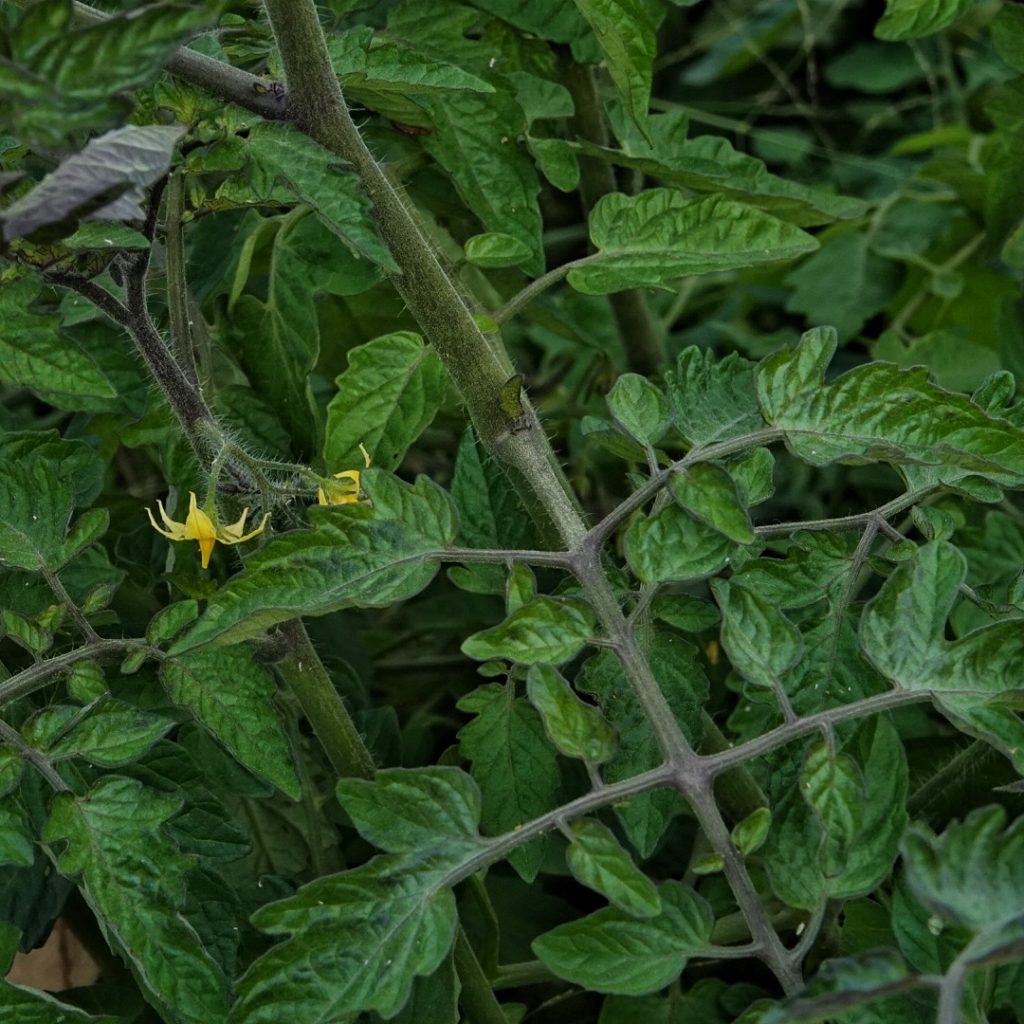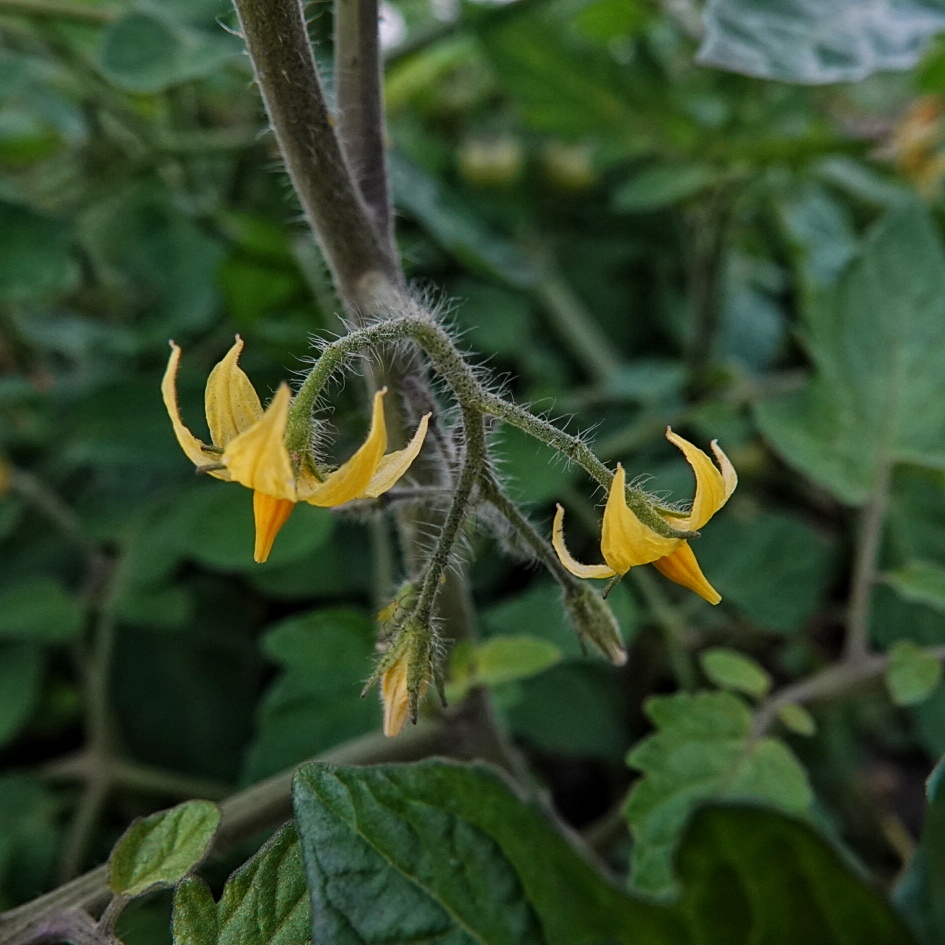
Well, I can guarantee you folks that I never expected to be writing a profile for this site about a tomato! But, as I was walking home from the library on Saturday morning I saw, growing in a weedy strip of soil between a parking lot and a sidewalk, a familiar set of leaves and some pretty little yellow flowers, and I said to myself ‘Holy cow, that’s a volunteer tomato plant’! My guess is that the remains of someone’s lunch got deposited there, with some leftover, seed containing tomato, which took that opportunity to propagate its species. I was thrilled enough to find it that I walked back over there, this time with a camera, and snapped some photos of this further bit of evidence of the irrepressibility of life.
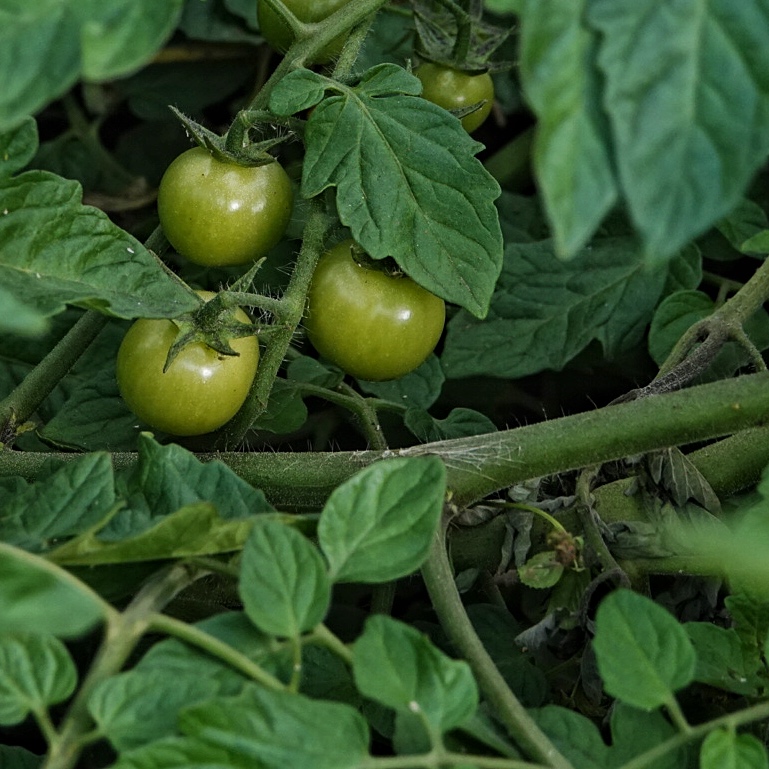
Tomatoes are native to South and Central America, and they were being cultivated for food as early as 500 bce. They were much in use by the Aztecs when the Spaniards encountered them in the 1500s. The Spaniards exported tomatoes to Europe, along with the other spoils of conquest, and from there they spread throughout the colonies of the various European powers.
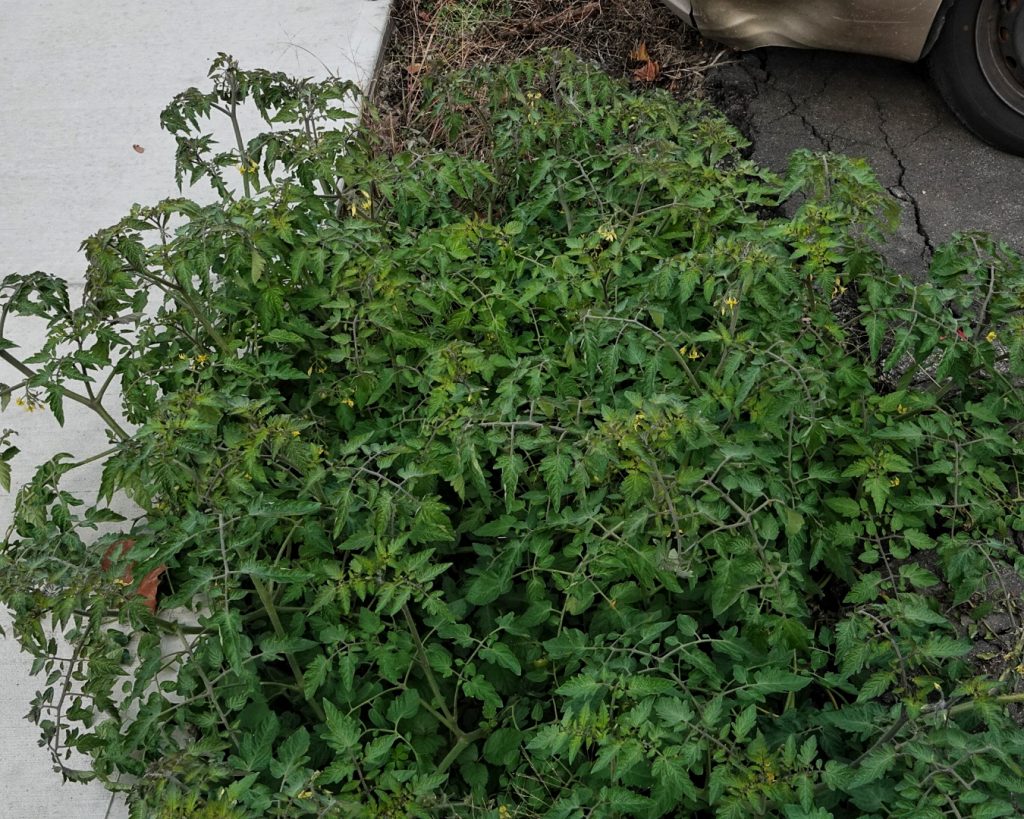
As most of you are undoubtedly aware, a tomato is, botanically, a fruit (technically a berry, because the seeds are contained within the ripened flesh of a single ovary), but did you know that legally, for tariff purposes, it is a vegetable? This is because of a Supreme Court decision in 1883 that declared that, because it was used as a vegetable for culinary purposes, it was subject to a tariff, which oddly applied to vegetables but not to fruit.
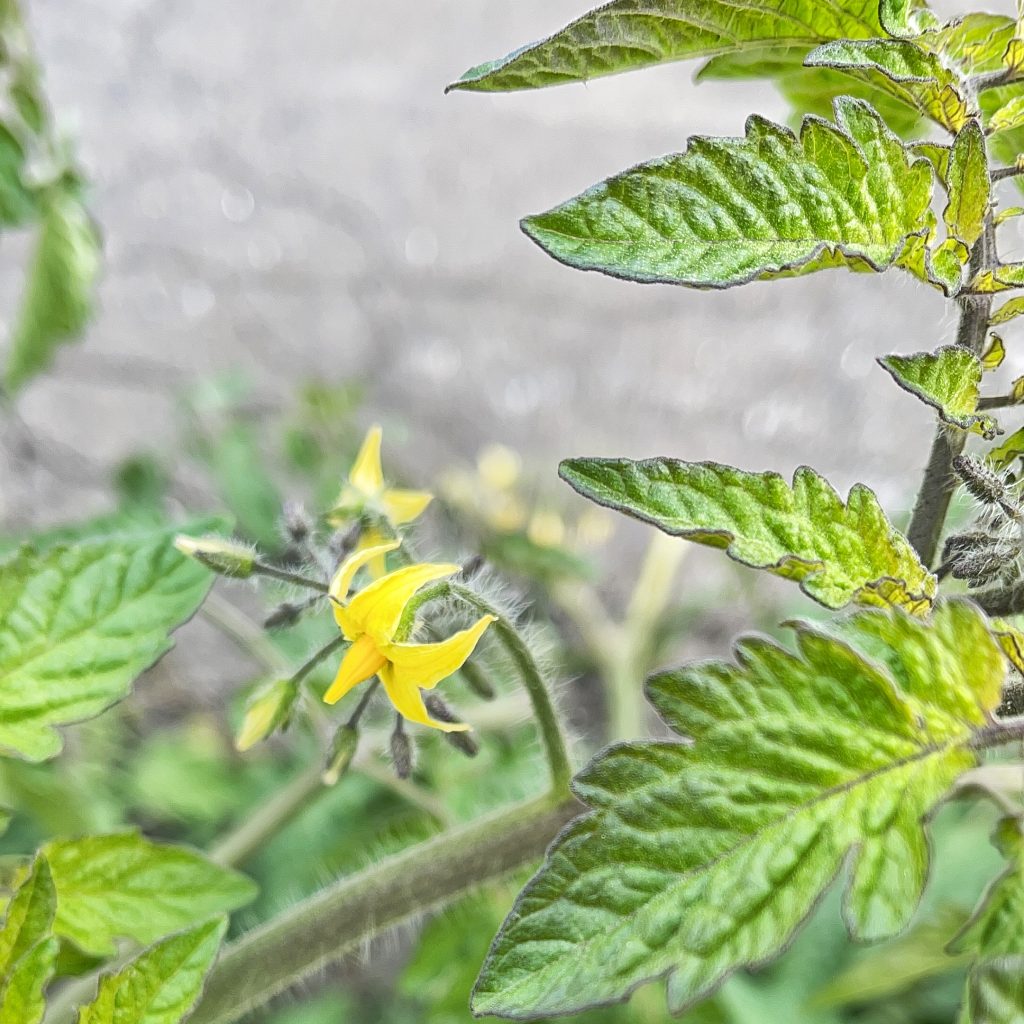
The wild, native plants only have small fruits, and people have been selecting for larger and redder fruit for centuries, such that there are now over 10,000 varieties of tomatoes. But selective breeding isn’t the only force at work on the bigger, better tomato front. Flavr Savr tomatoes, designed to have a longer shelf life, were the first genetically modified food to be available to consumers. But the costs of producing them proved prohibitive, and Calgene only produced them from 1994-97. Most genetic modifications since then have been aimed at tomatoes going into processed foods, but in 2021 Sanatech Seed started marketing a genetically edited tomato for personal consumption that is high in GABA, an amino acid that promotes relaxation and lowers blood pressure.
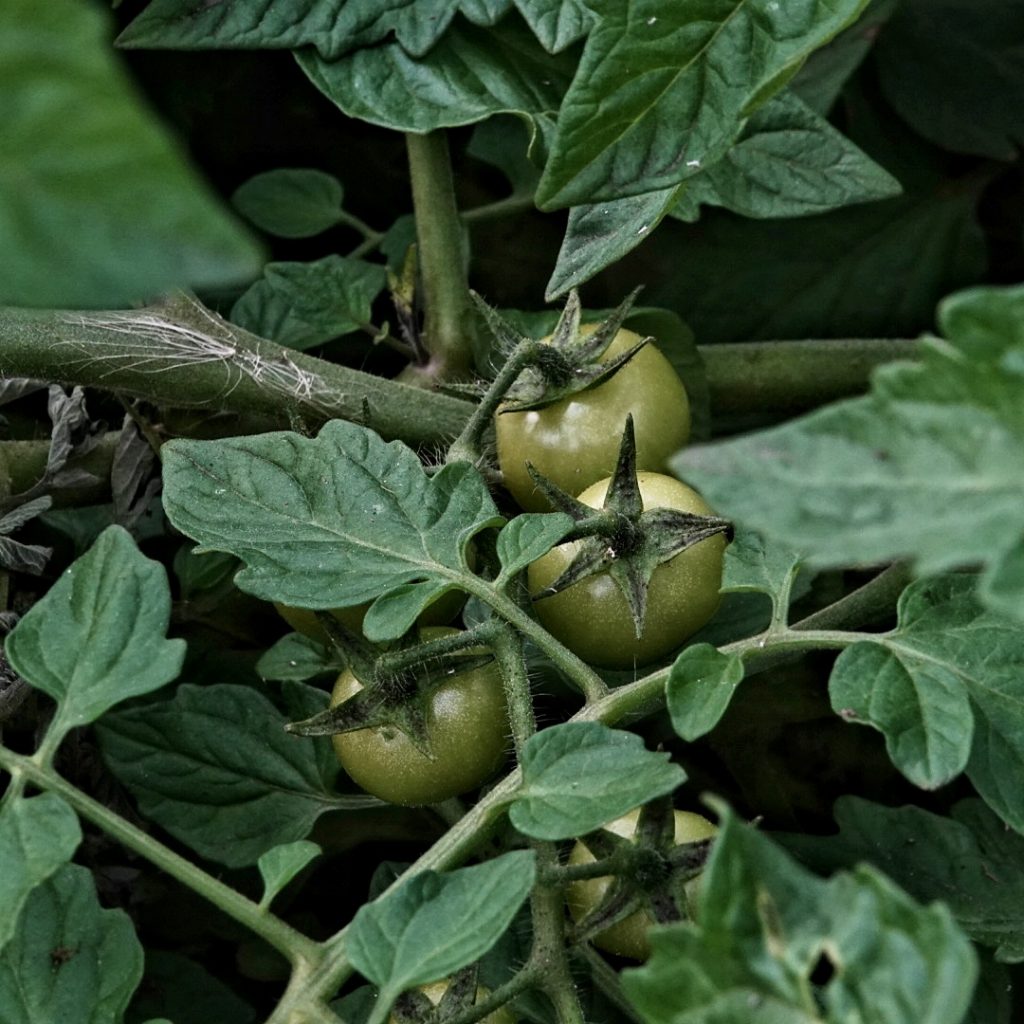
For quite a long while after tomatoes were brought to Europe they enjoyed their greatest popularity as ornamental garden plants, at least in part because, being members of the nightshade family (Solanaceae), they were thought to be poisonous. And the leaves, stems, and unripened green fruit do contain the toxin solanine and the alkaloid tomatine, although one would probably have to ingest a substantial amount for serious ill effects to occur. Still, it is probably best not to take chances, especially since solanine poisoning causes a long list of symptoms, including paralysis and cardiac dysthymia. And it can be deadly, with as little as 3 mg/kg of body weight potentially being a lethal dose.
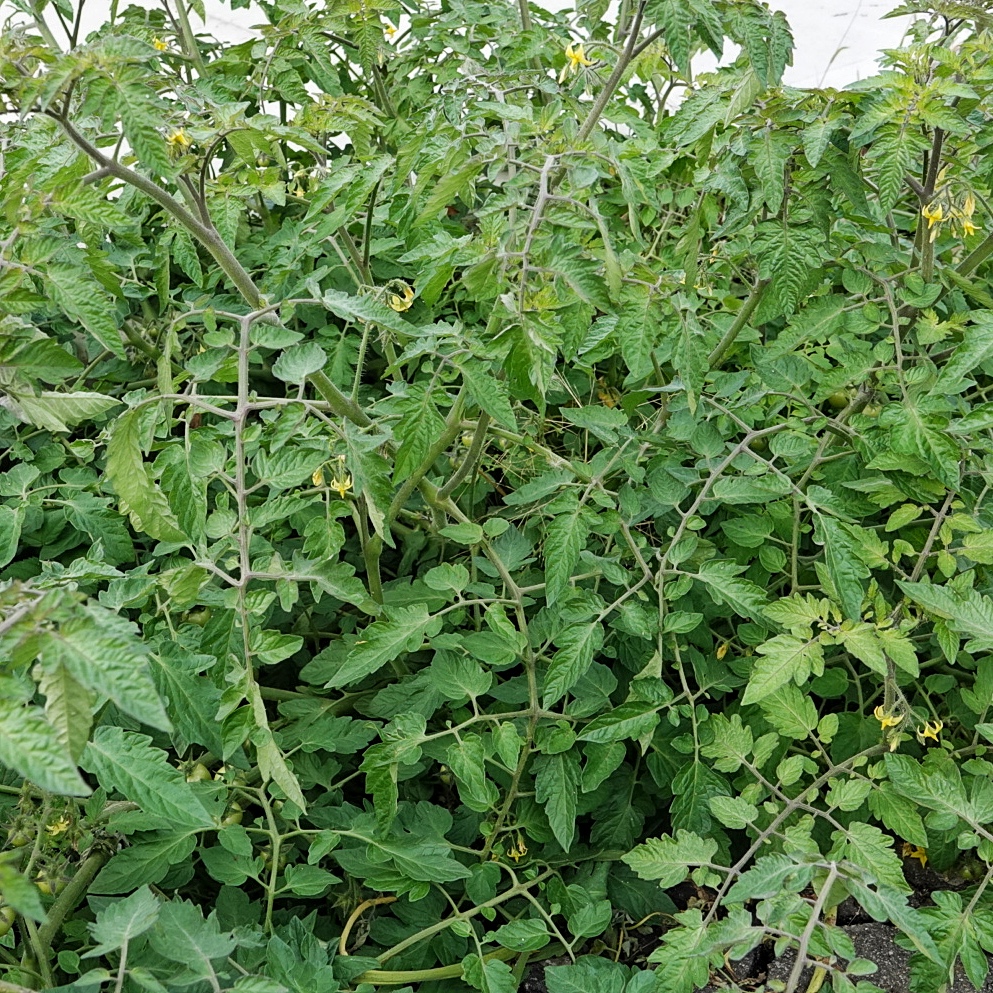
Besides the multitude of ways that humans use tomatoes as food (my personal favorite is as salsa), tomatoes also have medicinal properties. Sliced tomatoes can be used to treat many kinds of burns, and a paste of the leaves (often mixed with castor oil) is used on incipient leprosy spots and filarial worm swellings. The skin contains lycopine, which seems to offer some protection from heart attacks, and can be used to treat prostatectomy disorders. And decoctions of the whole plant have been used to treat rheumatism and severe headaches.
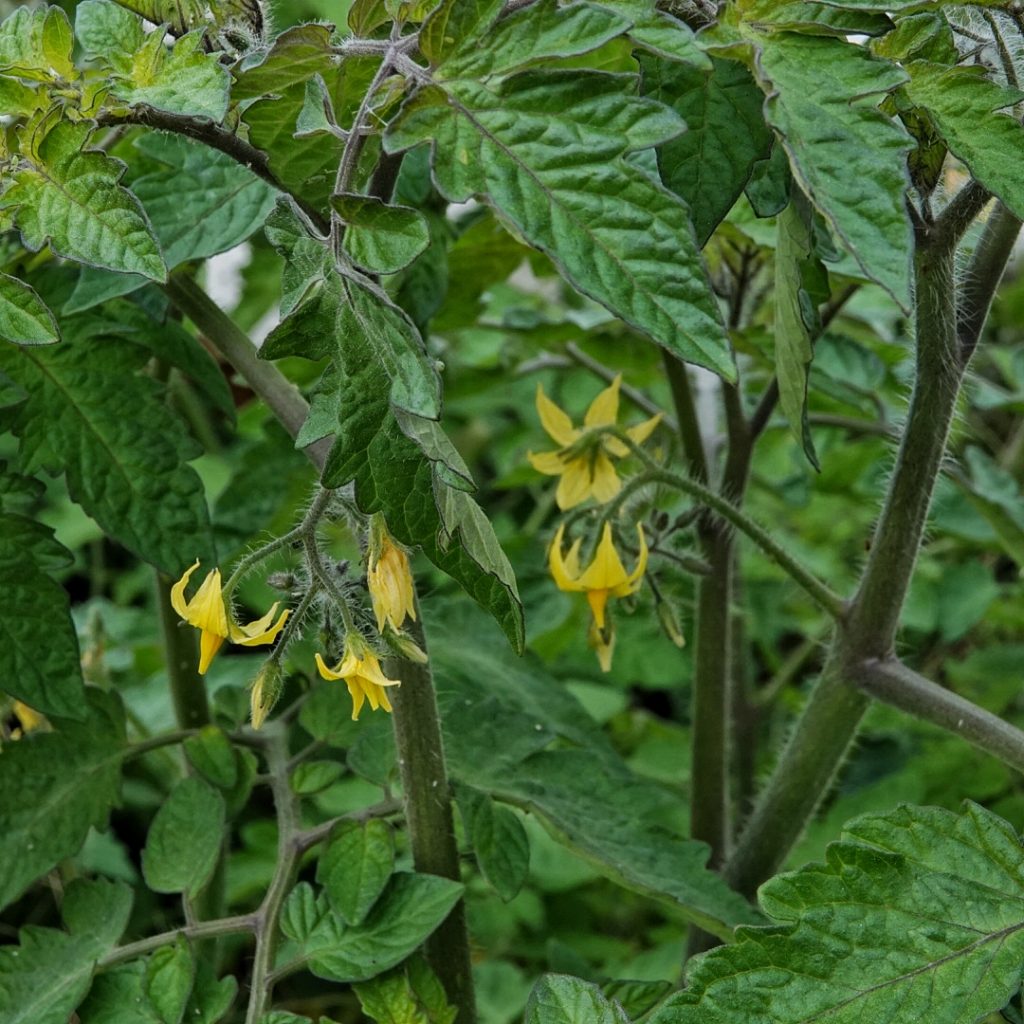
Description-Annual in our region; multiple sprawling vines covered with glandular hairs, seldom over 3’ tall unless supported; leaves are compound and pinnate, with 5-9 leaflets that may be up to 3” long; flowers are yellow; fruits are green to red; some varieties may look completely different than this description.
Similar species-Potatoes (Solanum tuberosum) has white to purple flowers; other Solanum spp. either have spines or simple leaves.
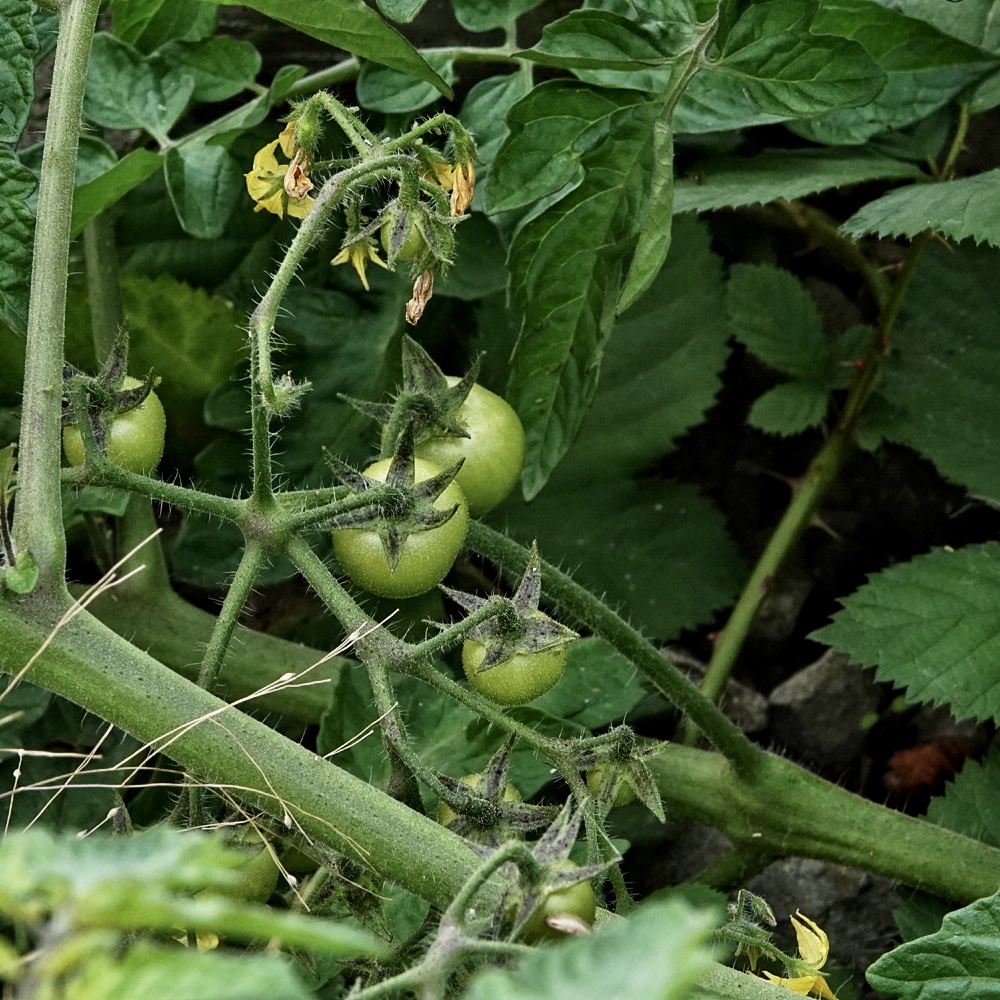
Habitat-Acidic to neutral, well drained soil in direct sunlight.
Range-Native to western South America; planted worldwide; could be found wild in most of our region, but I’m pretty sure this is the first volunteer I’ve ever seen.
Reproductive timing– Blooms in spring, but may flower again during a mild fall, such as we are having this year.
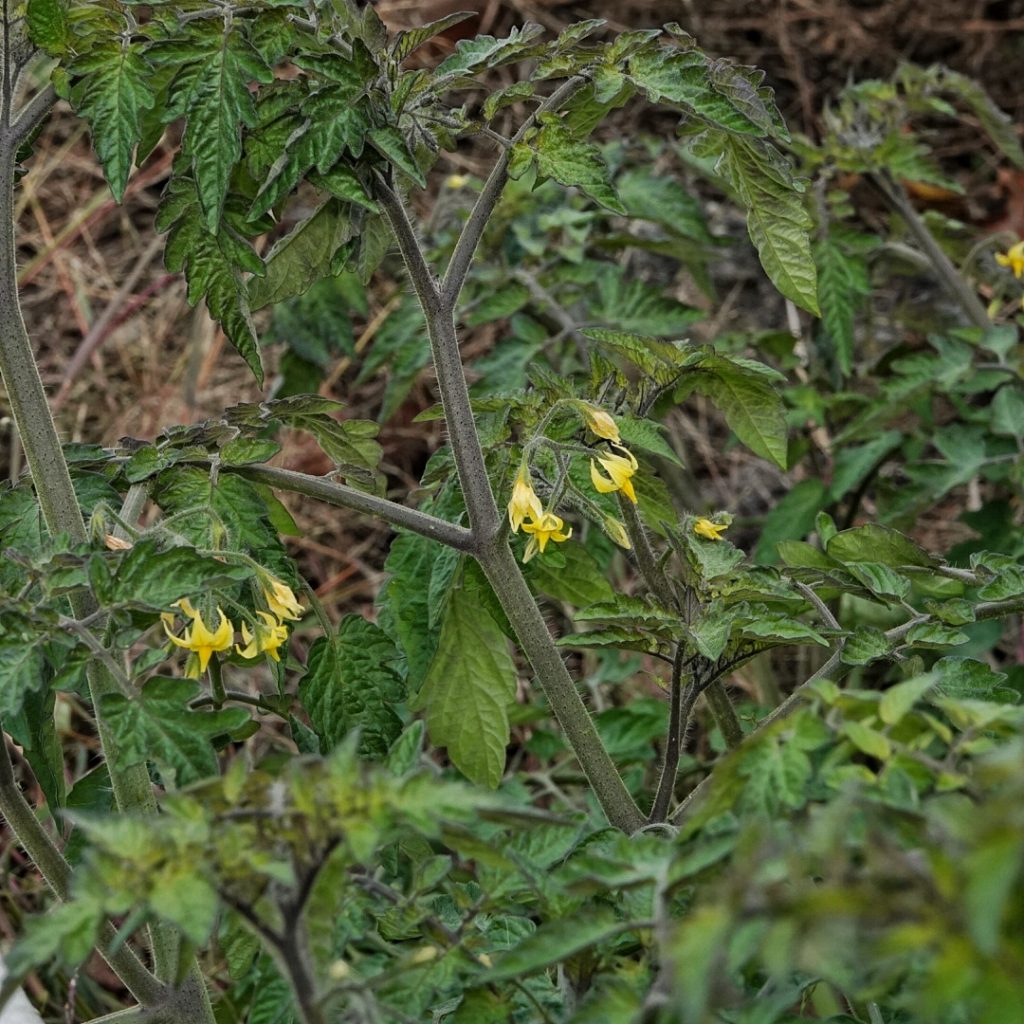
Eaten by-The lepidoptera Spodoptera exigua, Peridroma saucia, Nephelodes minians, Manduca quinquemaculata, Manduca sexta, Trichoplusia ni, Autographa californica, and Agrotis spp., the leaf beetle Leptinotarsa decemlineata, flea beetles in the genus Epitrix, Halyomorpha halys (Brown Marmorated Stink Bug) and any number of other members of Pentatomidae, many species of aphids and thrips, leaf mining flies in the genus Liriomyza, and innumerable other beetles, moths, and other arthropods; most of the damage is done by the larval forms, but some adults also consume these plants.
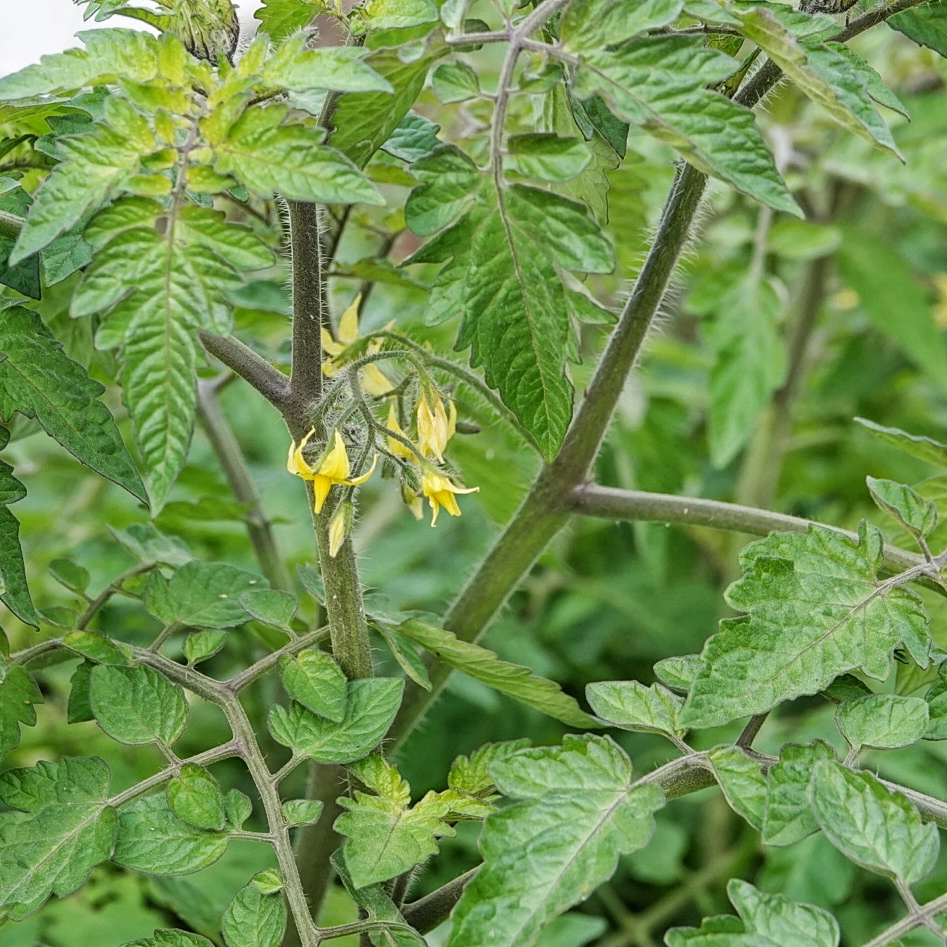
Etymology of names–Solanum is probably from the Latin for ‘living in the sun’. The specific epithet lycopersicum is from the Greek words for ‘wolf peach’. The common name ‘tomato’ is from the Nahuatl (the language complex of the Aztecs) word ‘tomatl’, meaning ‘swelling fruit’.
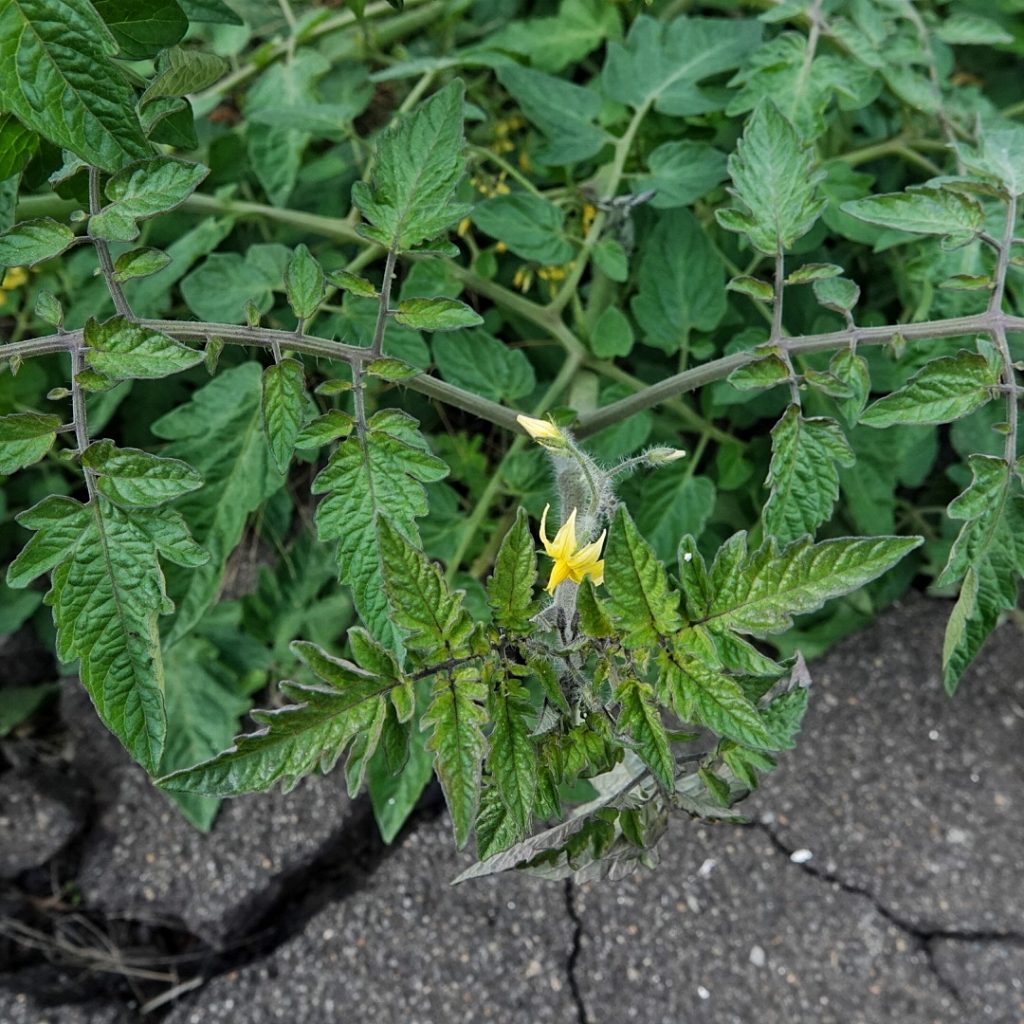
https://en.m.wikipedia.org/wiki/Tomato
http://www.fruitnet.com/eurofruit/article/184662/sanatech-seed-launches-worlds-first-ge-tomato
https://pfaf.org/User/Plant.aspx?LatinName=Solanum+lycopersicum
https://plantvillage.psu.edu/topics/tomato/infos
